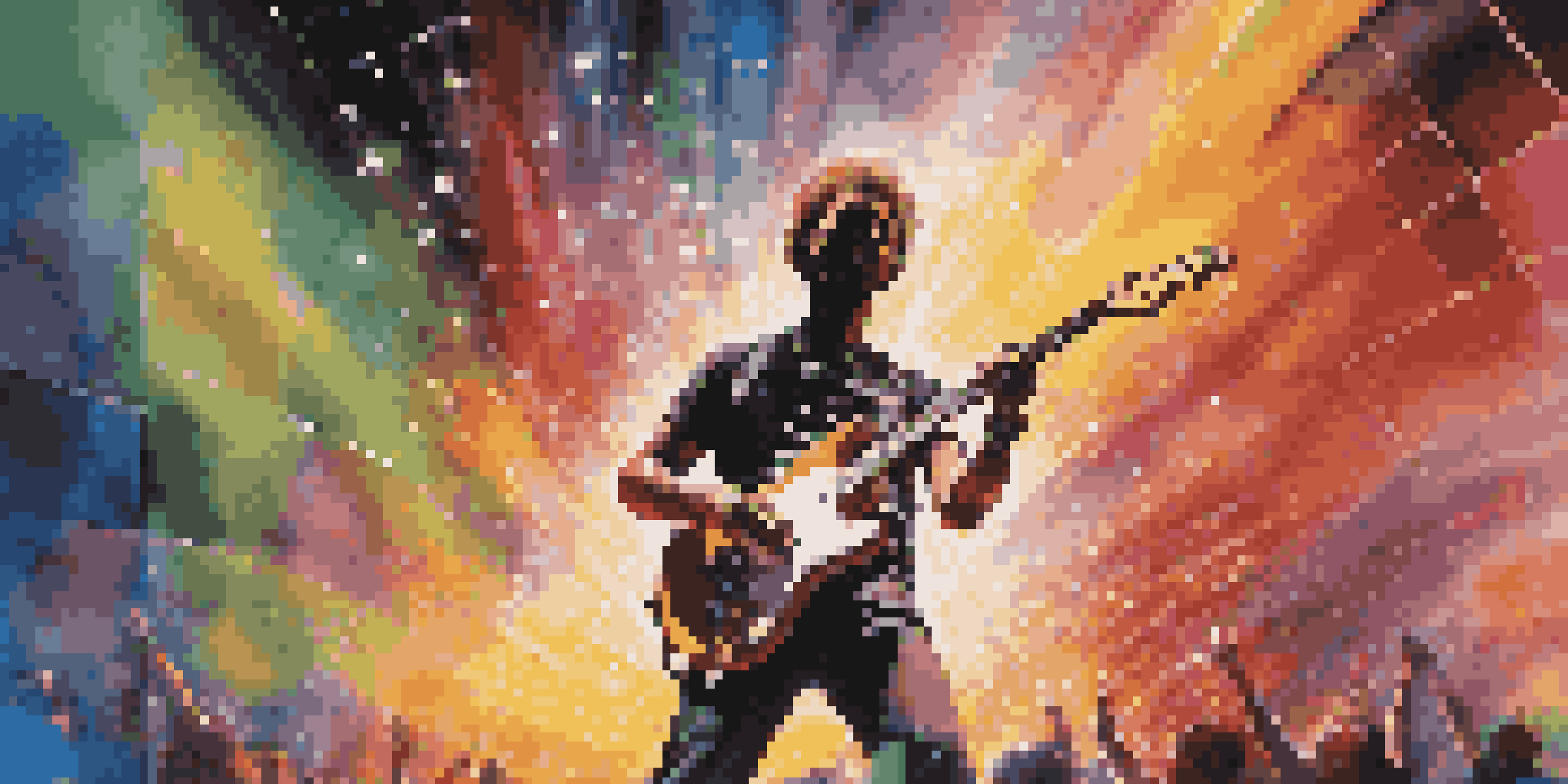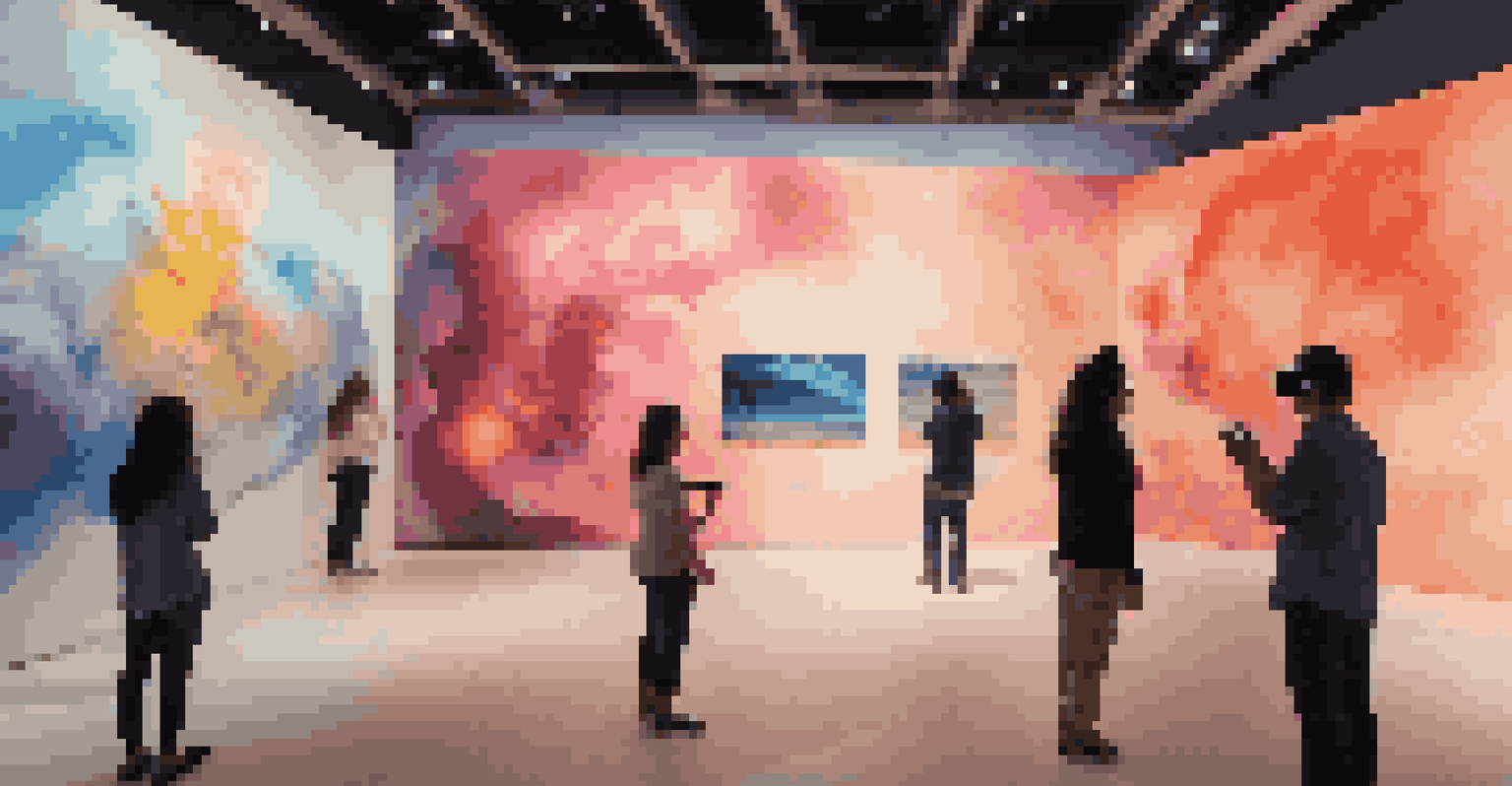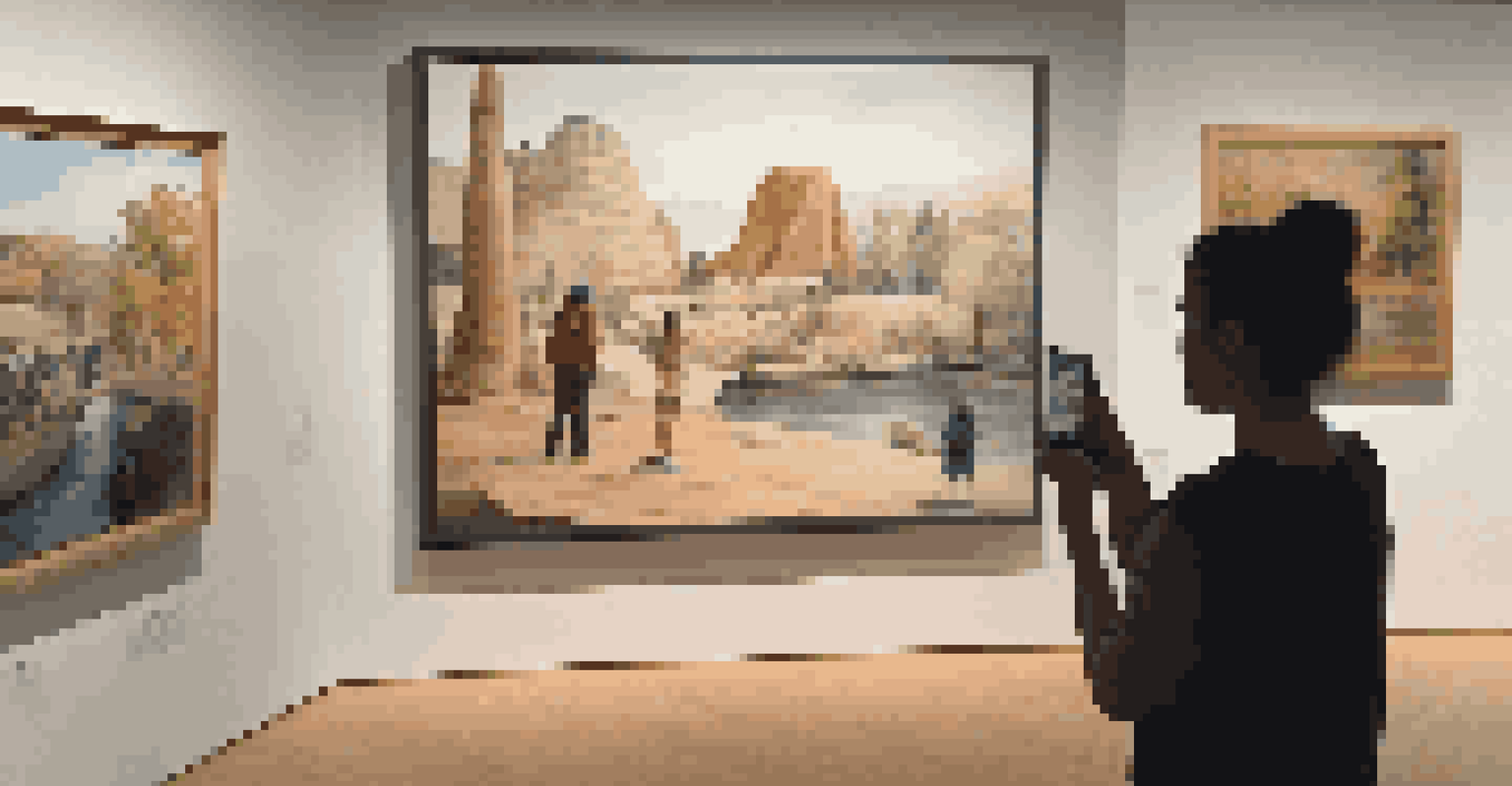Music and Visual Arts in Digital Culture: A New Era

The Fusion of Music and Visual Arts in the Digital Age
In today's digital culture, the lines between music and visual arts are increasingly blurred. Artists are experimenting with multimedia installations that combine sound and visuals, creating immersive experiences that captivate audiences. This fusion not only enhances the artistic expression but also invites viewers to engage with art in a multi-sensory way.
Art is the most beautiful of all lies; it is a bridge between reality and imagination.
For instance, think about a concert where the stage is transformed into a visual spectacle with synchronized light shows and video projections. This approach turns a simple music performance into a holistic experience, making it memorable and impactful. As technology evolves, the potential for these collaborations continues to expand, encouraging artists to push boundaries.
Moreover, social media platforms allow artists to share their work widely, connecting with audiences who appreciate both music and visual arts. This democratization of art fosters a community where diverse styles and ideas can flourish, ultimately enriching the cultural landscape.
Digital Tools Empowering Artists: A Game Changer
The advent of digital tools has revolutionized how artists create and share their work. Software for music production and graphic design has become more accessible, lowering barriers for budding creators. This shift means that anyone with a computer can experiment with audio and visual art, leading to a surge of creative output.

Consider how artists can now produce high-quality music tracks using just a laptop and a few software applications. They can also create stunning visuals using graphic design software or even apps on their phones. This accessibility not only democratizes the art-making process but also encourages collaboration across different art forms.
Music and Art Merge in New Ways
The fusion of music and visual arts in the digital age creates immersive experiences that engage audiences on multiple sensory levels.
As a result, we see a variety of innovative projects emerging, such as music videos that are entirely animated or interactive sound installations. These new forms challenge traditional norms and invite audiences to experience art in ways that were previously unimaginable.
The Role of Social Media in Artistic Collaboration
Social media platforms have become vital spaces for artistic collaboration and exposure. Musicians and visual artists are leveraging these platforms to showcase their work and collaborate on projects that might not have been possible in the past. It's fascinating to see how a simple hashtag can connect artists from different parts of the world.
The best artist has no conception that a marble block does not contain within itself, but he looks for the beauty that lies hidden within.
For example, there are countless challenges on platforms like TikTok where musicians collaborate with visual artists, creating unique content that resonates with viewers. This not only amplifies their reach but also fosters a spirit of community among creators. As artists interact and share ideas, they inspire each other to innovate and explore new avenues of expression.
Ultimately, social media serves as a launchpad for artists to experiment and share their evolving styles. It creates a vibrant ecosystem where creativity thrives, making it easier for emerging talents to gain recognition.
Virtual Reality: A New Frontier for Artistic Expression
Virtual reality (VR) has opened up new dimensions for artistic expression, allowing creators to immerse audiences in entirely different worlds. With VR, music and visual arts can coexist in an interactive environment, where viewers can engage with both forms in a way that feels personal and dynamic. This technology is redefining how we experience art.
Imagine stepping into a virtual gallery where each painting is accompanied by a unique soundtrack, or attending a concert where you can explore the space around you in 360 degrees. These experiences not only enhance enjoyment but also deepen the emotional connection to the art. Artists are now challenged to consider how their work translates into this immersive medium.
Digital Tools Empower Creativity
Accessible digital tools revolutionize art creation, enabling anyone with a computer to experiment with music and visuals.
As VR continues to develop, we can expect more artists to venture into this realm. This evolution may lead to entirely new genres of art that blend music and visuals in ways we've never seen before, pushing the boundaries of creativity and engagement.
Augmented Reality: Bridging the Gap Between Real and Digital
Augmented reality (AR) is another exciting development in the intersection of music and visual arts. By overlaying digital content onto the real world, AR allows artists to create interactive experiences that engage audiences in unique ways. This technology enhances the way we perceive art, making it more accessible and relatable.
For instance, AR can bring a static artwork to life by adding sound or movement when viewed through a smartphone app. Imagine visiting an art exhibit where you can point your device at a painting and hear the music that inspired it, or see animations that enhance the storytelling behind the piece. Such experiences create a dialogue between the viewer and the artwork.
As artists embrace AR, we can anticipate new forms of storytelling and expression that merge reality with digital enhancements. This not only captivates audiences but also encourages them to interact with art in a deeper, more meaningful way.
The Impact of Streaming Platforms on Art Consumption
Streaming platforms have transformed how we consume music and visual arts, offering unprecedented access to a global audience. With just a click, listeners can explore an artist's entire discography while visual artists can showcase their work through video content. This shift has reshaped the way artists promote and distribute their creations.
Consider how platforms like YouTube and Spotify allow artists to share their work without the need for traditional gatekeepers like record labels or galleries. This democratization empowers creators to reach their audiences directly, fostering a sense of authenticity and connection. Additionally, it opens the door for niche artists to find their communities.
Social Media Fuels Artistic Growth
Social media platforms facilitate collaboration and exposure, allowing artists to connect and share innovative projects globally.
However, this shift also brings challenges, as the abundance of content can make it difficult for individual artists to stand out. As a result, artists must navigate the ever-changing landscape of digital marketing and social media to maintain visibility and relevance in a crowded market.
The Future of Music and Visual Arts: A Collaborative Journey
As we look to the future, the collaboration between music and visual arts is likely to continue evolving in exciting ways. With emerging technologies and platforms, artists will have even more opportunities to experiment and create innovative works that resonate with audiences. This collaborative spirit is essential for pushing the boundaries of creativity.
Furthermore, the blending of these two art forms encourages a more inclusive approach to creativity, inviting diverse voices and perspectives to join the conversation. As artists from various backgrounds come together, they enrich the cultural tapestry and inspire others to explore their own artistic journeys.

Ultimately, the fusion of music and visual arts in digital culture represents a new era of creativity that celebrates collaboration and innovation. As we embrace this journey, we can anticipate a vibrant future filled with artistic exploration and expression.